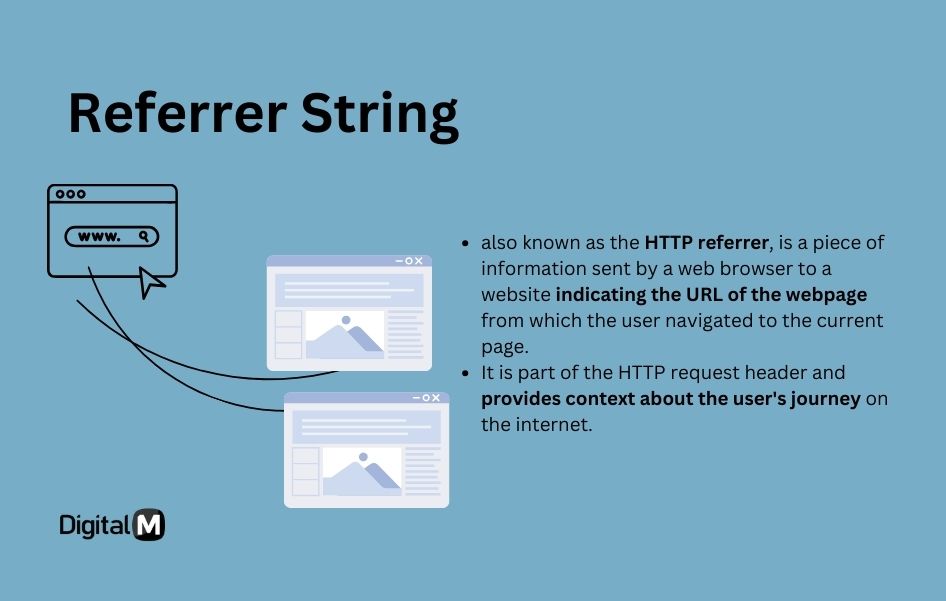Referrer String
The referrer string, also known as the HTTP referrer, is a piece of information sent by a web browser to a website indicating the URL of the webpage from which the user navigated to the current page. It is part of the HTTP request header and provides context about the user’s journey on the internet.
The referrer string is like a note that a web browser includes when you click on a link or visit a webpage. It tells the website you’re going to where you came from, helping the website understand how you found it.

Key Points:
Information Transmission: When you click on a link or type a URL, your browser sends an HTTP request to the destination server. The referrer string is part of this request and informs the server about the previous page or source.
Security Implications: While generally useful for websites to understand user traffic, there are privacy and security considerations. Some browsers or privacy settings may limit or omit the referrer string.
Components of the Referrer String:
Full URL: The complete URL of the referring page.
Domain: Sometimes, only the domain of the referring page is included for privacy reasons.
Parameters: Additional parameters may be included, providing more detailed information about the source.
Use Cases:
Analytics: Website owners use referrer information to analyze where their visitors are coming from, helping them understand traffic sources.
Marketing: Referrer data is valuable in assessing the effectiveness of marketing campaigns and tracking referral traffic.
Privacy Considerations:
Some browsers allow users to limit or disable the transmission of referrer information for privacy reasons. This may result in a reduced ability for websites to track referral sources accurately.
Example:
If you click on a link from a search engine results page to visit a website, the referrer string sent to the website might include the full URL of the search results page.
Why it Matters:
Website Analytics: Referrer information is vital for website owners to understand the sources of their traffic and the effectiveness of marketing efforts.
User Experience: For websites, knowing where users are coming from helps tailor content and improve the overall user experience.
Marketing Insights: Marketers use referrer data to assess the performance of different channels and campaigns, allowing them to allocate resources effectively.
In summary, the referrer string is information sent by a web browser to a website, indicating the URL of the webpage from which the user navigated to the current page. It is valuable for website analytics, marketing insights, and understanding user traffic sources.

